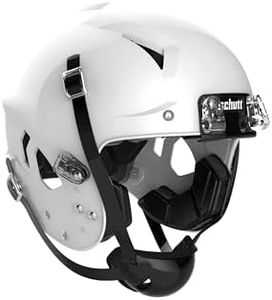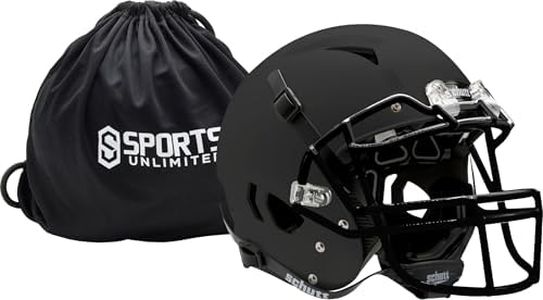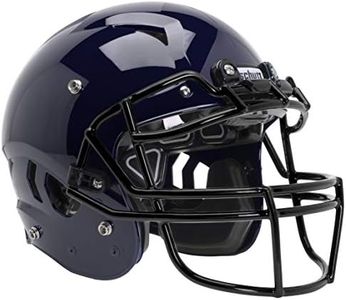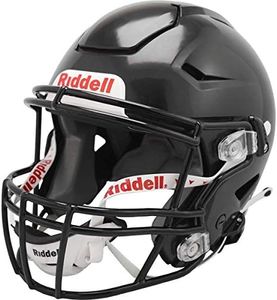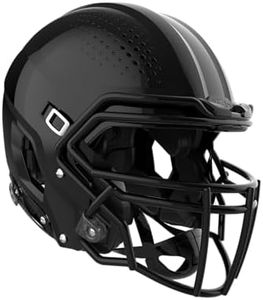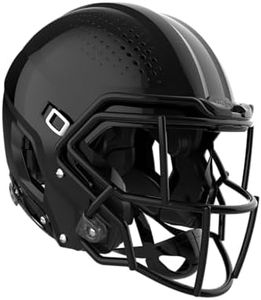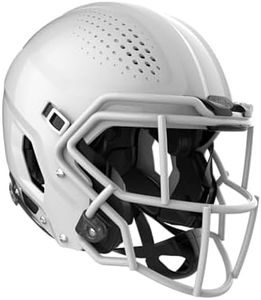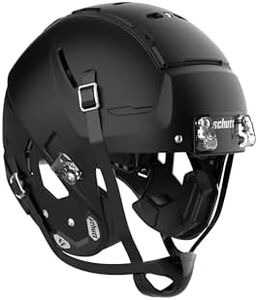We Use CookiesWe use cookies to enhance the security, performance,
functionality and for analytical and promotional activities. By continuing to browse this site you
are agreeing to our privacy policy
10 Best Youth Football Helmets
From leading brands and best sellers available on the web.Buying Guide for the Best Youth Football Helmets
Choosing a youth football helmet is an important decision because it directly affects the safety and comfort of a young athlete. The right helmet will help protect against injuries while allowing the child to play confidently and comfortably. To get the best fit, focus on the helmet’s features and how they match the needs of the player, considering elements like fit, protection, ventilation, and maintenance. Aim for a helmet that balances security with comfort so that wearing it doesn’t distract or hinder performance during the game.Fit and SizingFit and sizing refer to how well the helmet sits on the head and matches the player’s measurements. It’s one of the most crucial specs because a poorly fitting helmet can be uncomfortable and may not protect effectively. Helmets usually come in various sizes, sometimes adjustable, and should feel snug without being tight or causing pain. To pick the right size, measure the child’s head circumference with a soft tape measure just above the eyebrows, and check the helmet’s size chart. It’s important to try the helmet on and make sure there’s no sliding or shifting; if the helmet moves easily, it’s too big, while excessive squeezing or discomfort indicates it’s too small. Always prioritize a secure, comfortable fit for both safety and playability.
Padding and CushioningPadding and cushioning describe the soft, protective layers inside the helmet that absorb impact and enhance comfort. This feature is important because good cushioning helps minimize the force of bumps and collisions on the field. Helmets typically have foam or gel-based pads; some offer removable and washable pads for hygiene. Lighter padding is suitable for comfort but may offer less protection, while thicker, multi-layer padding can absorb more impact but make the helmet heavier or warmer. The best choice depends on the player’s position and playing style—those involved in more contact may need extra padding. Ensure the padding feels substantial and well-placed around the head, especially at the crown and sides, for reliable protection.
Shell MaterialThe shell material is the hard outer layer of the helmet that provides the first line of defense against impacts. Most youth helmets are made from plastic or polycarbonate because these materials balance strength and lightness. A harder shell offers better protection against hard hits, while a lighter shell is easier for younger players to wear for longer periods. For most young athletes, standard reputable materials work well. If your child is in a particularly aggressive league or position, consider a product known for slightly tougher construction but don't over-prioritize weight or toughness at the expense of comfort.
Chin StrapThe chin strap secures the helmet on the player’s head and keeps it from shifting during play. It also adds important stability, helping maintain the helmet’s protective position even in the midst of hard falls or tackles. Chin straps range from basic single-strap designs to more padded, adjustable, or multi-point models for a more stable fit. For younger or less experienced players, a basic but comfortable and secure strap is usually sufficient. For those who play more seriously or move a lot during games, an adjustable and padded chin strap provides extra security and comfort. Always ensure the strap is easy to adjust and doesn’t irritate the skin.
VentilationVentilation indicates how well the helmet allows air to flow around the player’s head, which helps keep them cool during practice and games. Good ventilation can prevent overheating and make it easier to focus on the game rather than discomfort. Helmets provide airflow using various vent patterns and sizes. More vents generally mean better cooling, while fewer vents can make a helmet hotter but potentially a bit safer in some aggressive play. For most youth players, moderate to high ventilation will provide a comfortable balance—so look for a helmet that doesn’t get too hot after just a few minutes of wear.
Face Mask CompatibilityFace mask compatibility refers to the design of the helmet to accept various face mask styles, which protect the face and mouth. Some helmets come with an attached face mask, while others require a separate purchase. The masks differ in bar pattern and coverage; more bars offer greater protection but less visibility, while simpler masks may offer more visibility but cover less. Pick a face mask that matches the player’s position—linemen may need more protection, while receivers and defensive backs might prefer a lighter mask with better visibility. Always check that the helmet and mask are compatible and approved for youth football.

